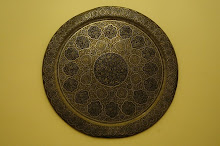
Everyone knows that the origins of agriculture and civilization are in the Middle East. In the back of our minds are Egypt and the Nile and the Mesopotamian civilizations of the Sumerians and Babylonians along the Tigris and Euphrates rivers.
We also have an image of farmers irrigating their crops who, over time, developed cities, civilizations, alphabets and Towers of Babel. Little did we know that even these very ancient and great civilizations may have been preceded by the genius of some mere hunter gatherers in neighbouring Anatolia. It appears that, before the dawn of agriculture, humans built structures that resembled full-fledged temples that may have been critical for the development of our civilization.
12,000 years ago at Gobekli Tepe ("Potbelly Hill" in Turkish), a stone temple was put in place that began to draw thousands to gaze at its wonder. The site is made up of rough stone limestone blocks, some 18 feet high, that are carved with images of animals from scorpions to wild boars. The incredible feat was that sixteen tons of these stones were moved hundreds of feet by small nomadic groups who did not have the wheel or barrow.
Creating this site before the agricultural revolution and well-developed social hierarchies took shape has been been equated with "building a 747 in the basement with an exacto knife." (1) The largest stones are T-shaped, possibly symbolizing humans, and face the centre of a circle, hinting at a focus on an event, a dance or a ritual.



The standing theory is that organized religion developed after civilization was established as a tool for social cohesion and cultural development. What may have happened is the reverse. The human impulse towards the sacred and the desire for spectacle may have brought huge numbers to visit temple sites such as Gobkeli Tepe, creating the necessity for cultivation of grains to feed the masses - and from there inducing settlement.
It seems that the pursuit of greater meaning is as fundamental to human development as economics. Mere survival, or even environmental change, may not be enough to create new and successful patterns of society, and to cause civilizational leaps. There has to be a sense of seeking deeper meaning - of reaching for the stars in order to create the necessary common cause. Some have indicated that the construction of the great cathedrals of Europe, bringing together serfs, merchants, the church and specialized and knowledgeable artisans may have also been such a shift, helping to propel Europe away from the Dark Ages towards its renaissance and greater integration.
Gobkeli Tepe did degenerate. It was rebuilt over centuries and succeeding versions were smaller and less well-made. It is so with many religious and foundational acts: the original events are highly empowered and what follows is often only their shallow echo. For this reason, this act of coming together to seek greater meaning may have to be redeveloped and refreshed every so often - in the same way as a body needs exercise, or a house a spring cleaning.
(1) National Geographic, June 6, 2011













